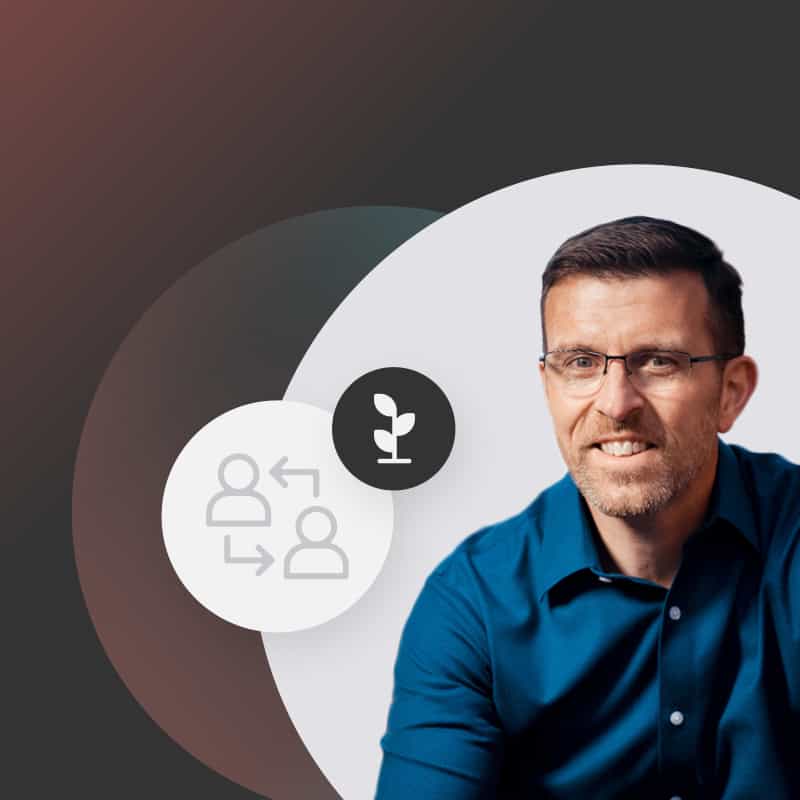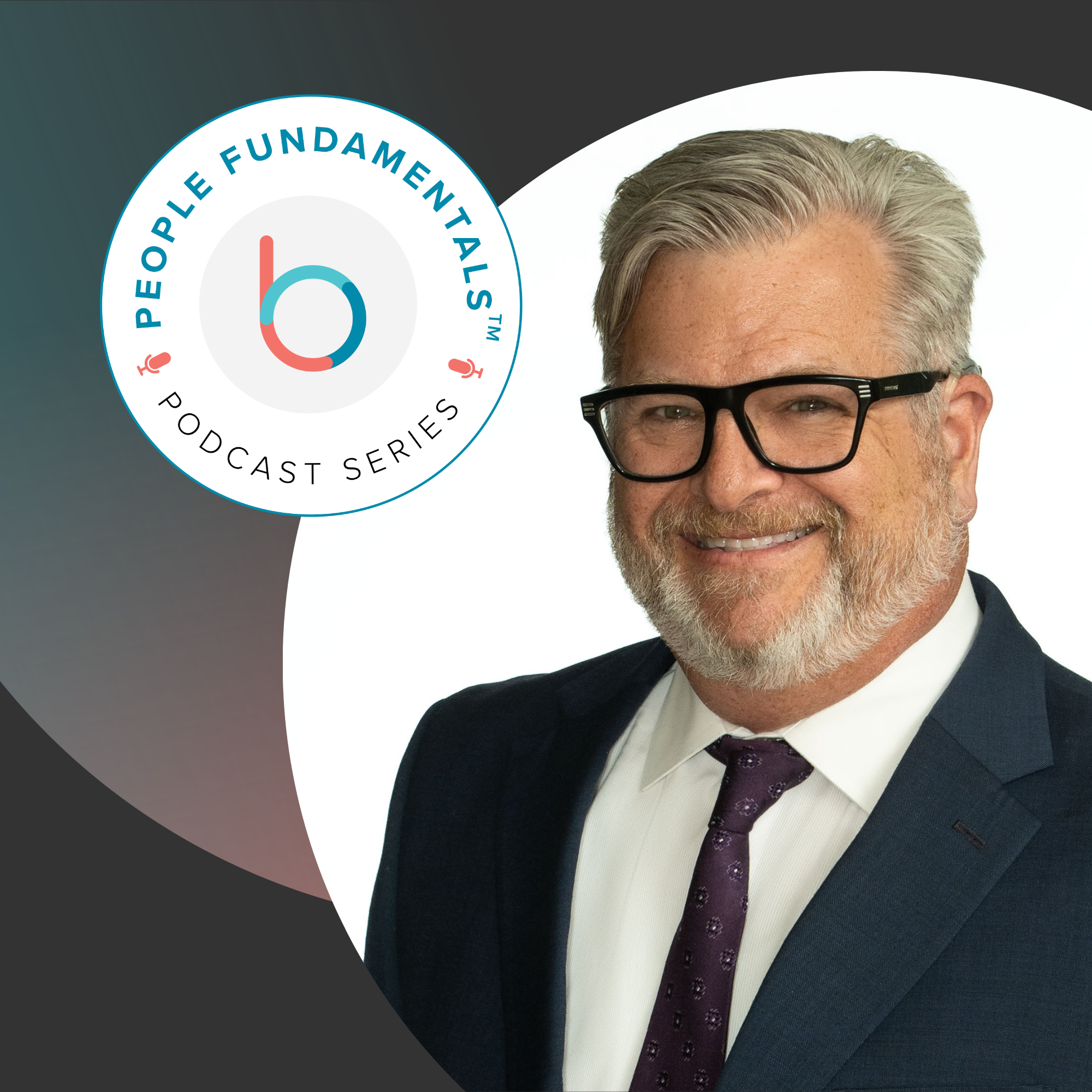Plants grow best when the conditions are right, and the same is true for people. If you provide the right environment, support, and resources, your employees will become the best versions of themselves. But that’s not how we’ve traditionally viewed performance management.
“You need to fundamentally rethink how you understand performance management if you want to create an organization and an experience for people where they can be their best, they can do their best, and willingly offer that to you,” said author, keynote speaker, and management trainer Jason Lauritsen during the People Fundamentals webinar “Where We Keep Going Wrong With Performance ‘Management.’”
Check out the highlights of the conversation to learn why today’s workforce needs a model of cultivation and growth to thrive.
People need to be cultivated, not fixed or replaced
Lauritsen grew up on an Iowa farm and witnessed firsthand the connection between healthy growth and performance.
Farmers are in the performance business: “Their livelihood is dependent on fostering the growth and performance of other living things,” he said. “They’re cultivating the growth and performance of these plants.” The farmer’s success is intertwined with the success of the crops. If the seeds don’t grow to their full potential, the farm and the farmer’s livelihood are at risk.
Yet they never doubt the seed’s ability to flourish. “Farmers spend virtually no time worrying about whether or not that seed they put in the ground will grow,” Lauritsen said. “[That seed] is genetically hardwired to grow into the best version of itself, so long as it has what it needs and it’s free of obstacles.”
Cultivation, or the process of supporting plant growth, is a concept Lauritsen believes is key to performance enablement in the modern workplace. “[Farmers] know that the growing is just the natural part,” Lauritsen said. “Their job, the work, is cultivation: making sure they have what they need and getting obstacles out of the way.”
“Employees experience work as a relationship, and in order for them to be fully engaged and perform at their best, work has to feel like a healthy relationship.”
— Jason Lauritsen, author and speaker
In too many workplaces today, when people aren’t performing, we look at how to fix or replace them. If we take the farmer’s approach, however, we ask “What do you need?” or “What’s in your way?” These questions presume that conditions aren’t optimal for the worker’s growth rather than assuming the person is the problem.
“What I would argue is that every single human being, given the means and the opportunity, will choose success over failure every single time,” Lauritsen said.
People are more than mechanisms of production
To support our people, we need to redirect performance management to cultivate growth, remove obstacles to success, and develop an environment where people can reach their full potential. But that’s not traditionally how we’ve thought about performance.
Legacy performance management processes were built on outdated management models that simply don’t apply in today’s workplace and deliver little benefit. “The problem is so many of our modern performance processes — talent processes, too — are based on that same management model that we never displaced,” Lauritsen said.
Modern management arose during the Industrial Revolution, Lauritsen said, largely in factory settings where people were seen as a replaceable link in the production chain. Management cared more about production than people, leading to inhumane working conditions and the need for labor unions to protect workers. Business leaders and union representatives eventually came to contractual agreements regarding working conditions to keep people safe.
“Out of this legacy of the invention of management, we have basically two big things that happened,” Lauritsen said. “Number one, management sees and views employees as mechanisms of production — essentially as machinery — and number two, they are conditioned to see and treat work like a contract.”
But technology and the ways in which we work have evolved. “People use their intellect and their creativity and all of these things to produce work, and treating them like machines and work like a contract doesn’t work anymore,” Lauritsen said.
Legacy processes haven’t kept up. “Performance appraisals, performance improvement plans, job descriptions, policy manuals — all of these things were designed to administer that work as a contract, to make sure that our machinery is producing at the level we are paying them to produce,” Lauritsen said.
“People use their intellect and their creativity and all of these things to produce work, and treating them like machines and work like a contract doesn’t work anymore. …Performance appraisals, performance improvement plans, job descriptions, policy manuals — all of these things were designed to administer that work as a contract.”
— Jason Lauritsen
Employees view work as a relationship
Employees today don’t view work purely as a transaction. People expect to get more from work than just a paycheck, and that changes how we manage and motivate people.
“When we’re in a situation where our core needs are met, and we can do some of that work that feels good to us,” Lauritsen said, “then you get more of my creativity, you get more of my energy, you get more of my commitment, you get more of my focus — and that produces the better performance outcomes.”
During his research into what drives high performance, Lauritsen found strong parallels between how employees view work and how they view relationships with important people in their lives. Employees do best when they feel valued, trusted, cared for, appreciated, and accepted.
“Employees experience work as a relationship,” Lauritsen said, “and in order for them to be fully engaged and perform at their best, work has to feel like a healthy relationship.”
Rethinking work as a relationship instead of a contract is the first step to rethinking performance and employee engagement. “How can we reshape our processes, our approaches, how our managers show up to foster relationships?” Lauritsen asked. Your processes can be designed to put humans first, for example, while the tech you use can nudge managers to prioritize human interactions.
Watch “Where We Keep Going Wrong With Performance ‘Management’” on demand for the full conversation.
Where We Keep Going Wrong with Performance Management


